Washington Square Arch
At WASHINGTON SQUARE PARK
MAP of GREENWICH VILLAGE
The Village Cigar Shop
GREENWICH VILLAGE NEW YORK
Photo Copyright Daniel Bellino Zwicke
All Photos Except the 1st Photo and MAP are by Daniel Bellino Zwicke
All Rights Reserved
John's of Bleecker Street
JOHN'S PIZZERIA
Since 1927
MINETTA TAVERN
Photo Copyright DANIEL BELLINO ZWICKE
GET a PRINT
VILLAGE CIGAR SHOP
.
.
Caffe Reggio
DYLAN , PACINO , HENDRIX , KENNEDY And OTHERS
At CAFFE REGGIO
GREENWICH VILLAGE
.
.
Macdougal Street
Villa Mosconi , TIRO SEGNO CLUB , The MERMAID , CAFFE DANTE
Inside CAFFE REGGIO
GREENWICH VILLAGE
ESPRESSO CAPPUCCINO CARAVAGGIO CASABLANCA
TEA and PASTRIES
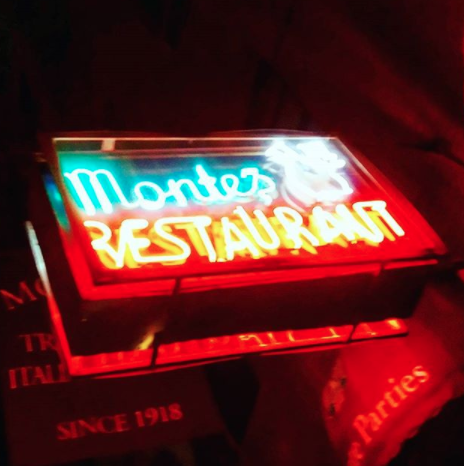
MONTE'S TRATTORIA
Since 1918
OLD SCHOOL ITALIAN
in GREENWICH VILLAGE
.

TONY , TOMASO , and MARIO
MONTE'S TRATTORIA
MACDOUGAL STREET
CLASSIC RED SAUCE JOINT

CHEF PIETRO MOSCONI
and Some Fresh PASTA DOUGH
READY to GO
MONTE'S is One of DOWNTOWN MANHATTAN'S Few Remaining OLD SCHOOL
ITALIAN NEW YORK FAMILY OWNED RESTAURANTS LEFT
This Great Old NEW YORK ITALIAN RESTAURANT is RUN By PIETRO MOSCONI
and His SON PETER MOSCONI ,
and is a CHERISHED GREENWICH VILLAGE INSTITUTION
.

TOMASO
Waiter at MONTE'S
PORTO RICO COFFEE IMPORTERING CO.
"THE BEST COFFEE in NEW YORK"
BAR NONE
PORTO RICO COFFEE is Owned by an ITALIAN-AMERICAN FAMILY
(The LONGO'S) and has been Importing Green Coffee Beans , ROASTING COFFEE
and SELLING IT in GREENWICH VILLAGE and All over NEW YORK Since1907
BOB DYLAN'S FORMER HOUSE
78 MACDOUGAL STREET
The Old CAFFE DANTE is NO LONGER
But is Now an UPSCALE COCKTAIL LOUNGE
Though They Still Serve Great ESPRESSO and CAPPUCCINO
Caffe Dante operated as a True ITALIAN CAFFE for Exactly 100 YEARS
From 1915 to 2015 When Mario Flotta who owned the Caffe for 44 Years Sold It
It was then turned into the Upscale Cocktail Lounge it is Now.
It still retains the
Name DANTE
MINETTA TAVERN
Photo Copyright Daniel Bellino Zwicke
ARTURO'S
COAL OVEN PIZZA
A GREENWICH VILLAGE INSTITUTION
The Old VESUVIO BAKERY
ITALIAN AMERICAN BREAD BAKER
GREENWICH VILLAGE
ITALIAN ENCLAVE
NEW YORK
.
CHECKER CAB
The STREETS of GREENWICH VILLAGE
MANGIA ITALIAN
By Native GREENWICH VILLAGE AUTHOR
DANIEL BELLINO ZWICKE
That's The OLD ROCCO'S on THE COVER
NOW CARBONE RESTAURANT
ARTWORK COPYRIGHT Daniel Bellino Zwicke
Classic GREENWICH VILLAGE BROWNSTONES
and BRICK HOUSES
.
.
BLUE SINGER iN GREENWICH VILLAGE
MACDOUGAL STREET at MACDOUGAL ALLEY
FLORENCE IATLIAN BUTCHERS
HOME of THE NEWPORT STEAK
Customers Waiting for their STEAKS
FLORENCE PRIME MEATS
ITALIAN BUTCHERS
.
A NEWPORT STEAK
INVENTED by JACK OBALDI
ITALIAN BUTCHER 1947

RAFFETTO PASTA
In GREENWICH VILLAGE Since 1906
HOMEMADE RAVIOLI
FRESH PASTA
VESUVIO
The Famous Old Storefront of VESUVIO BAKERY
Prince Street , NEW YORK NY

BAR at The SALGAMUNDI CLUB
For ARTISTS
The WHITE HORSE TAVERN
Where DYLAN THOMAS Had His LAST DRINK
GREENWICH VILLAGE NEW YORK
JIMI HENDRIX
Former Greenwich Village Resident
JIMI Loved and Lived in GREENWICH VILLAGE NY
His Recording Studio ELECTRIC LADY is Still There
On 8th Street between 5th & 6th Avenues

Th MARLTON HOTEL
On the same Block as ELECTRIC LADY STUDIOS
Mickey Rourke, Julie Andrews, Jack Kerouac, Maggie Smith, John Lithgow,
John Barrymore, and Claire Bloom all have lived at The Marlton
A CHECKER CAB
On West 8th STREET GREENWICH VILLAGE
These Classic Looking TAXI CABS Roamed the streets of GREENWICH VILLAGE
and all of NEW YORK Before they were taken out of service in the mid 1980s
The WHITE HORSE TAVERN
Where DYLAN THOMAS Had His LAST DRINK
18 WHISKIES, I think it's the record." After Thomas's death, the bartender
at The White Horse said it was 9 Whiskies. Who knows for sure.
Dylan Thomas
In GREENWICH VILLAGE
November 1953. .

A DESOTO on FIDth AVENUE
EASTER SUNDAY 2016
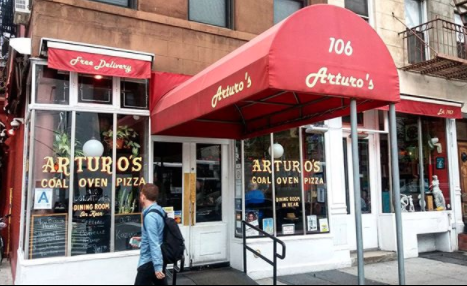
ARTURO'S
THE BOYS at ARTURO'S
From L to R : "JOHNNY EYES" JOE , SALI, and SCOTTY
TONY The BARTENDER Tends Bar
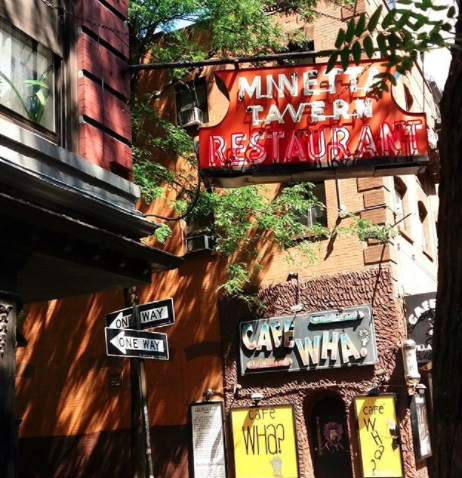
MINETTA TAVER and CAFE WHA
JIMI HENDRIX , BOB DYLAN , and Most All Famous FOLK SINGERS
of THE 60s ALL PERFORMED HERE at CAFE WHA
The MACARI FAMILY
and Cousin Daniel
EASTER DINNER 2017
TIRO SEGNO ITALIAN CLUB

My GRANDFATHER
FILLIPO BELLINO
IMMIGRATED to NEW YORK
with My Nonna GIUSEPPINA in 1904
BAR PITTI
CELEBRITY HOT SPOT
And One of The BEST ITALIAN RESTAURANTS
in NEW YORK

CHEF PIETRO Buying TRUFFLES
From TRUFFLE PURVEYOR
MONTE'S TRATTORIA
MACDOUGAL STREET
Looking North to The EMPIRE STATE BUILDING
from MACDOUGAL STREET
GREENWICH VILLAGE
CHEF GIOVANNI of TIRO SEGNO
with JOE MACARI (Macari Vineyards)
and ME (Daniel Bellino Zwicke)
at TIRO SEGNO PRIVATE ITALIAN CLUB
GREENWICH VILLAGE on EASTER SUNDAY 2017

The HANGMAN'S TREE
WASHINGTON SQUARE PARK
GREENWICH VILLAGE
The OLDEST TREE in NEW YORK
300 YEARS OLD
Looking Up to The EMPIRE STATE BUILDING
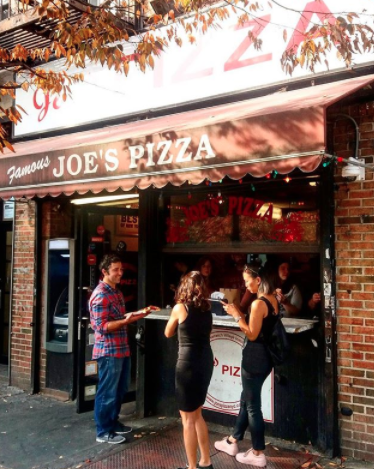
JOE'S PIZZA
BEST SLICE in NEW YORK

JACK O LANTERN
in GREENWICH VILLAGE
HALLOWEEN 2017

ADA Dressed as a GYPSY
In Front of La LANTERNA
HALLOWEEN 2017
AMY'S BAKERY CAFE
One of The BEST BREAD BAKERS in TOWN
GREAT CAKES TOO !
.
Homes on GAY STREET
GREENWICH VILLAGE
RAFFETTO PASTA
OVER 100 YEARS OLD
in GREENWICH VILLAGE
NEW YORK
VESUVIO BAKERY - Italian Bread Bakers NYC Print
VESUVIO ITALIAN BREAD BAKERY is a One-Of-a-Kind design from an original painting by the artist Bellino of the historical Old Italian New York Bakery Vesuvio's on Prince Street in what is now known as Soho, but to the Italian American Baker Anthony Dapolito who owned and operated this famed Italian New York institution, his Bakery on Prince Street was in what old-timers still consider Greenwich Village New York and NOT Soho.
This a Limited Edition artwork created by Bellino.
VILLAGE GATE
The SIGN is ALL THAT'S LEFT
BABBO
ITALIAN LADIES
HOMEMADE ITALIAN DINNER
Author Daniel Bellino Zwicke
Walking up MACDOUGAL STREET at MINETTA LANE
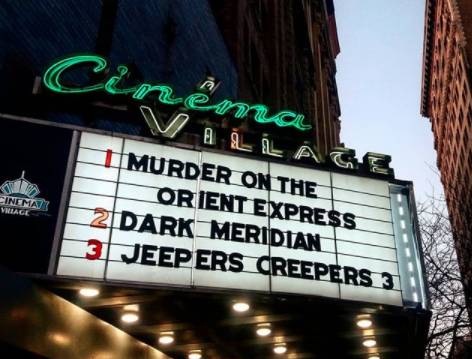
OLD GREENWICH VILLAGE MOVIE HOUSE
CINEMA VILLAGE
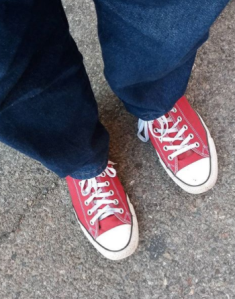
Walking The Streets
of GREENWICH VILLAGE
My Trusty CONVERSE SNEAKERS
"I HATE ALL THE UGLY SNEAKERS PEOPLE WEAR THESE DAYS"
"GIVE ME MY CONS"
BAR CICHETTI
The 1st VENETIAN WINE BAR (Bacaro)
In The United States of America
Created by Chef / Wine Director DANIEL BELLINO ZWICKE
and TOM TARACI
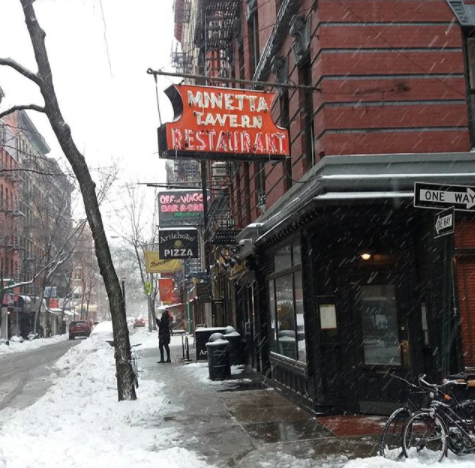
A SNOWY DAY in THE VILLAGE
Walking Down MACDOUGAL STREET
GREENWICH VILLAGE
MINETTA TAVERN
STEAKS BURGERS and FRITES
On SNOWY and RAINY DAYS
BEAN BOOTS are The BEST WAY
To NAVIGATE
The STREETS of GREENWICH VILLAGE
The CORNELIA STREET CAFE
AN OLD STAND BY
FAICCO'S PORK STORE
The BEST PLACE to GET ITALIAN SAUSAGES
SALUMI and VEAL SCALLOPINES
In GREENWICH VILLAGE
SUNDAY SAUCE
ITALIAN-AMERICAN
.
CAFFE VIVALDI
JONES STREET
GREENWICH VILLAGE
NEW YORK
.
CAFFE REGGIO
A CEILING FAN From The Movie "CASABLANCA
"
CAFFE REGGIO , Greenwich Village New York
Where's HUMPHREY BOGART
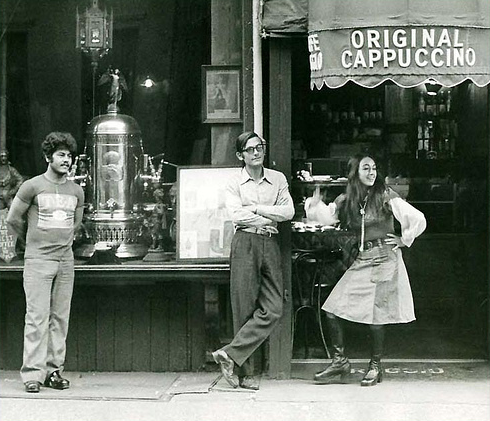
CAFFE REGGIO
GREENWICH VILLAGE NEW YORK
Umberto Eco
at CAFFE REGGIO
GREENWICH VILLAGE
.
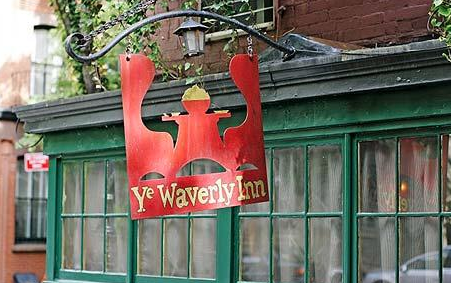
Ye OLD WAVERLY INN
.
OLD WOOD HOUSE
CORNER GROVE and BEDFORD
GREENWICH VILLAGE , NEW YORK
RAFFETTO PASTA
SINCE 1906
GREENWICH VILLAGE NEW YORK
FRESH HOMEMADE RAVIOLI PASTA
.
MAMOUN'S FALAFEL
and CAFFE REGGIO
Two Great GREENWICH VILLAGE INSTITUTIONS
On MACDOUGAL STREET
Author @DanielBellinoZwicke
On INSTAGRAM
Pictured here with his Kitchen Crew at BAR CICHETTI ,
with Fashion Model FRANKIE RAYDER and
with Friends Raoul Marti and MATT DILLON
The OLD ROCCO'S Neon Sign
ROCCO RESTAURANT
THOMSON STREET GREENWICH VILLAGE
Now CARBONE
VILLAGE CIGARS
CHRISTOPHER STREET at 7th AVENUE
GREENWICH VILLAGE
Copyright Daniel Bellino Zwicke
A Snow Day in the VILLAGE
7th Avenue at Christopher Street
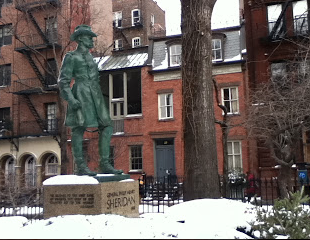
Statue of CIVIL WAR GENERAL
GENERAL SHERIDAN
SHERIDAN SQUARE
GREENWICH VILLAGE
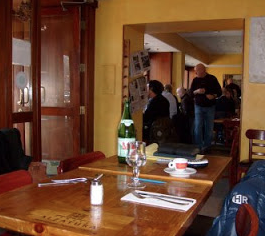
Inside BAR PITTI
Owner GIOVANNI
BAR PITTI is One of NEW YORK'S BEST
ITALIAN TRATTORIA
Taking a NAP
At "JIMMY THE CHEESEMAN'S SHOP"
From The POPE of GREENWICH VILLAGE
Starring MICKEY ROURKE and ERIC ROBERTS
with TONY MUSANTE and DARYL HANNAH
SULLIVAN STREET GREENWICH VILLAGE
NEW YORK
Friends on SULLIVAN STREET
Author's Daniel Bellino Zwicke with Jerom
Chris Nominee and John Kenney
ONCE UPON a TART
GOT ANY KAHLUA ?
The BIG LEBOWSKI COOKBOOK
.
.
.
THE RAGU BOLOGNESE COOKBOOK
by DANNY BOLOGNESE
A BRIEF HISTORY of GREENWICH VILLAGE
.
EARLY SUNDAY MORNING
by Edward Hopper
7th Avenue, Greenwich Village NY
Greenwich Village is one of the world's most famous neighborhoods, located on the southwest corner of downtown Manhattan in New York City.
Steeped in history, the village is also known as "West Village" or simply "the Village." It has Broadway on the east, the Hudson River on the west, Houston Street on the south, and 14th Street on the north. Surrounding communities include East Village to the east and Chelsea to the north.
Originally a small farming community, the area surrounding the village was once marshland. It was referred to as "Sapokanikan" in the 16th century. The land was turned into a pasture by the Dutch settlers in the 1630s and then it came to be known as "Noortwyck."
In 1664, the village developed as a hamlet separate from the larger downtown Manhattan when the English occupied the Dutch settlement of New Amsterdam.
It officially became a village in 1712 and was first referred to as "Grin'wich" in the records of the Common Council. As a result of recurring yellow fever in New York City in 1820s, many people fled to the healthy area of Greenwich Village and remained there. The village was converted into a military parade ground and park in 1826.
With a history spanning nearly two centuries, Greenwich Village was a mecca to Bohemians, and they played a major role in propagating new political, artistic, and cultural ideas in the area.
Since the turn of the 20th century, the Village has been a destination to famous artists, writers, entertainers, and intellectuals, such as E.E. Cummings, Eugene O'Neill, and Edgar Allan Poe.
The village also remained home for political rebels such as John Reed and Marcel Duchamp who proclaimed the founding of "The Independent Republic of Greenwich Village." Further, the village's role as a center for movements is remarkable.
Presently, the Village is a vibrant area, dominated by some important monuments, beautiful townhouses, multitudes of dining areas, and a wacky serpentine layout of streets.
The Federal-style row houses, Greek Revival townhouses, and quaint carriage houses, apart from the office buildings of the late 19th century and towering 20th century apartment buildings, reflect the creative and diverse population of the Village.
The heart of the neighborhood is the historic Washington Square Park, which is a hub of activities such as chess playing, skateboarding, and walking or jogging. The Village is also the seat for some of the important educational institutions in the nation, such as New York University (NYU) and New School University.
The world's oldest gay and lesbian bookstore - Oscar Wilde Bookshop - is located here. Petrosino Square, Little Red Square, Time Landscape, Desalvio, Thompson Street, and William Passannante Ballfield are other important landmarks in the village.
Also, located here is The Cage, officially known as the West 4th Street Courts. It is one of the most important venues for the city-wide amateur basketball tournaments. In addition, the Village is the place for the renowned Halloween Parade - a mile-long parade of life-sized puppets and masqueraders that draws more than two million spectators.
Macdougal Street
Macdougal Street and Bleecker Street are two of the most famous and historical streets in all of Greenwich Village. They were the main streets that spawned such Bohemian Types as Jack Keroac of the Beat Generation known as Beatniks. Macdougal Street and Bleecker Streets and the area where they converge was the epicenter of Folk Music in Greenwich Village in the many clubs, cafes, and Coffee Houses back in the 1960s with such musical artists as Bob Dylan, Joan Baez, Maty Travers of Peter Paul & Mary, John Sebastian, John Phillips and Cass Elliot (Mamma Cass) of the Mammas & Pappas, Pete Seger, John Denver and others, and later on such notables as Jimi Hendrix at Cafe Wha, Steven Tyler and Aerosmith.
Map of GREENWICH VILLAGE
SUNDAY SAUCE is NEW YORK ITALIAN
Greenwich Village for a long time from the early 1900s to the early 1960s was primarily an Italian Neighborhood made up of immigrants of the Southern Italian enclaves of Naples and Sicily, as well as some from Genoa, Calabria, and Abruzzo. There are still a few great old Italian businesses left like; Monte's Trattoria (Since 1918), Raffetto Pasta Co. since 1906, and PORTO RICO COFFEE owned by the Longo Family Since 1907, and CAFFE REGGIO since 1927, which features paintings from the School of CARAVAGGIO and Rennaissance Benches from a Medici Pallazzo that can actually sit in as you sip your Italian Cappuccino and listen to Classical Music in a most delightful way. This is just a little taste of the charms of Greenwich Village New York.
Native Writer of Greenwich Village
Best Selling Greenwich Village Italian-American Author Daniel Bellino-Zwicke
Minetta Street
1928

New York City’s Greenwich Village, or “the Village”, is located in Lower Manhattan on the West Side. Though now it consists of mostly upper middle class families, Greenwich Village once birthed cultural movements such as the Beat Generation and ’60s counterculture. As an artist’s haven, it was the East Coast’s bohemian birthplace. Broadway to the east, the Hudson River to the west, Houston Street to the south, and 14th Street to the north provide borders for the neighborhood.
In the 16th century, Greenwich Village was a marshland known as Sapokanican. It’s main inhabitants were Native Americans who used the Minetta Brook to fish for trout. The area became known as Noortwyck by the Dutch settlers who cleared area pastures and planted crops. By 1713, it was referred to as Grin’wich.
Greenwich (Grin’wich) Village survived the American Revolution as a pastoral suburb. After the war, the areas commercial life centered around fresh produce markets which were centered around the edge of the Hudson River. Washington Square Park was originally a potter’s field and public gallows after being purchased by the city in the 1780s. Whereas the area was originally secluded from the rest of the city, the outbreak of cholera in the late 1700s and early 1800s drove people to seek refuge in this neighborhood, which led to the construction of temporary housing and banking offices. Because of the outbreaks, the population quadrupled between 1825 and 1840. Middle-class merchants and tradesman soon became the majority of the area and subdivided farms and undertook landfill projects to accommodate the population of the area and make room for blocks of Federal style row houses.
The character of the neighborhood was changed in the late 19th century by the domination of immigrants. As the French, Irish, and Italian moved in, the area transitioned to a culture of bohemianism. The Washington Square Arch was constructed in marble and the area was memorialized by the writings of Henry James and Edith Wharton, Washington Square and The Age of Innocence, respectively.
With the growing of New York University came the growth of art clubs, picture galleries, learned societies, literary salons, and libraries. Entertainment such as theaters and shopping also began to gain prolific exposure in the area.
At the turn of the 20th century, the Village was ethnically diverse and quaint. By World War l the area had settled into its reputation for nonconformality and low rent. During Prohibition local speakeasies attracted uptown patrons. Decrepit row houses were remodeled into “artistic flats” for the well-to-do, and in 1926 luxury apartment towers appeared at the northern edge of Washington Square. The stock market crash of 1929 halted the momentum of new construction.
During the 1930s, galleries and collectors promoted the cause of contemporary art. Sculptor Gertrude Vanderbilt Whitney opened a museum dedicated to modern American art on West 8th Street, now the New York Studio School. The New School for Social Research, on West 12th Street since the late 1920s, inaugurated the “University in Exile” in 1934.
The beat movement took hold in the 1950s with the opening of MacDougal coffee houses and storefront theaters on Bleecker. During the 1960s a homosexual community formed around Christopher Street and in 1969 a confrontation between police and patrons culminated in a riot known as the Stonewall Rebellion. This started a nationwide movement for gay and lesbian rights. Greenwich Village became a rallying place for antiwar protesters in the 1970s and for activity mobilized in response to the AIDS epidemic in the 1980s.
The Villages dedication to historical and ethical preservation has been a long held neighborhood tradition and the neighborhood remains as a hub for artists, locals, and “immigrants” looking for a neighborhood specializing in nonconforming social standards, although the prices to live here are geared more towards the upper-middle class.
The TWIN SISTERS
Greenwich Village
by Bellino
SUITABLE For FRAMING
.

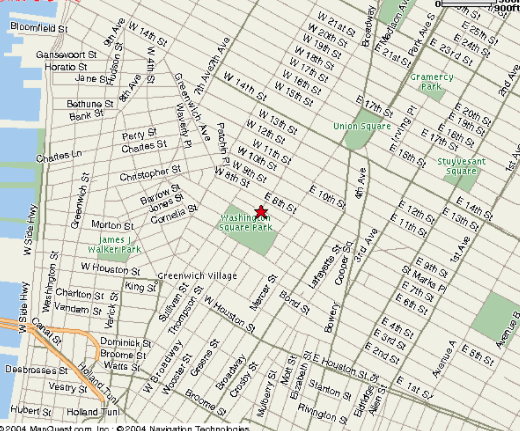





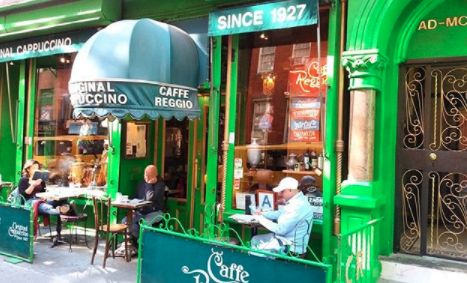
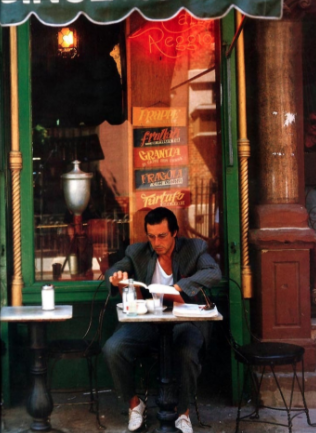





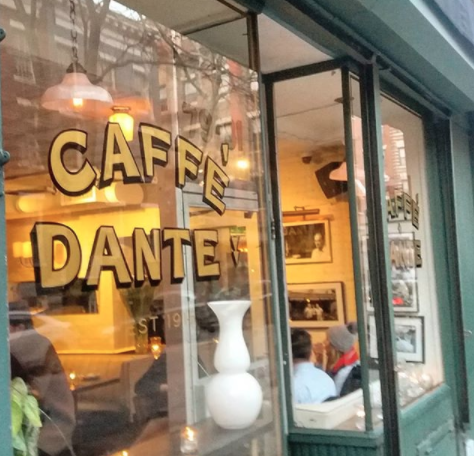


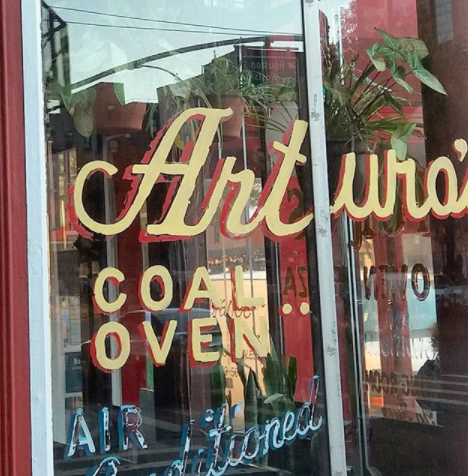

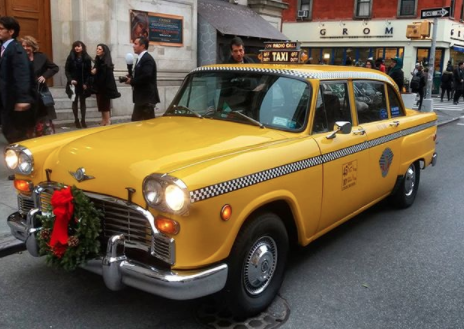



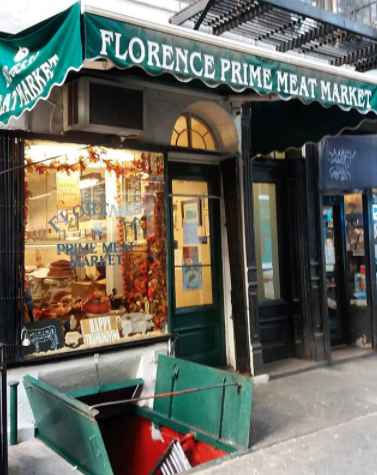
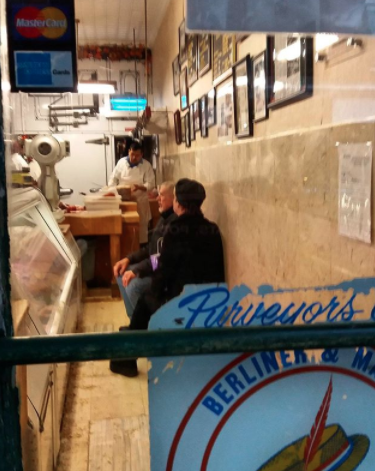

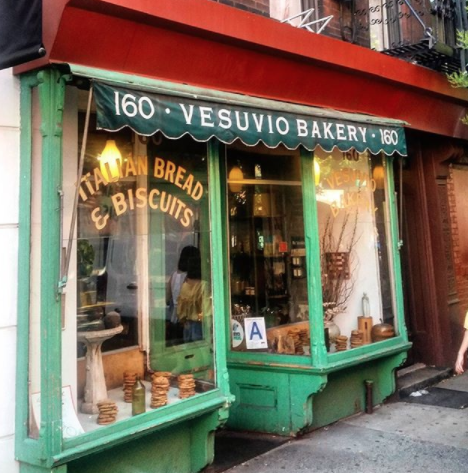


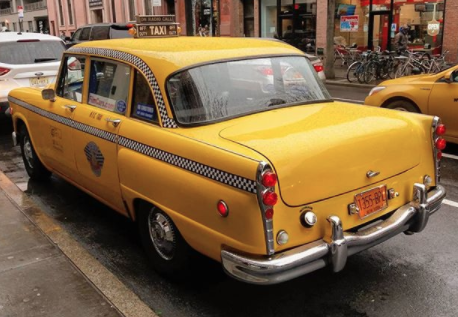


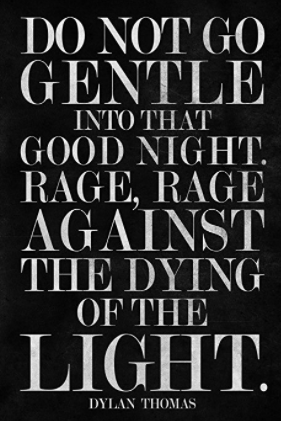
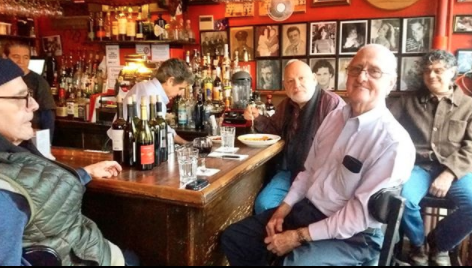



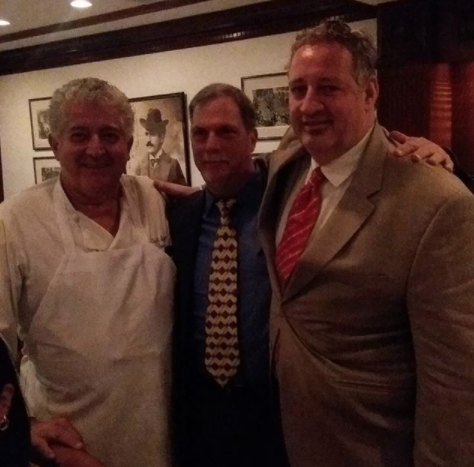



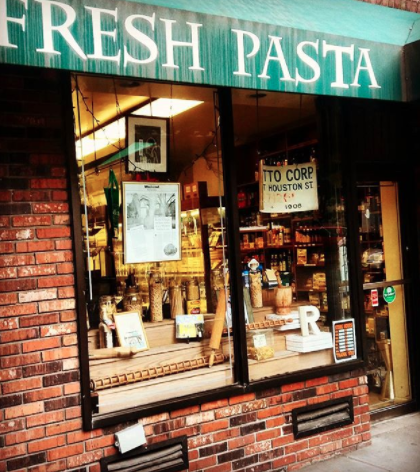


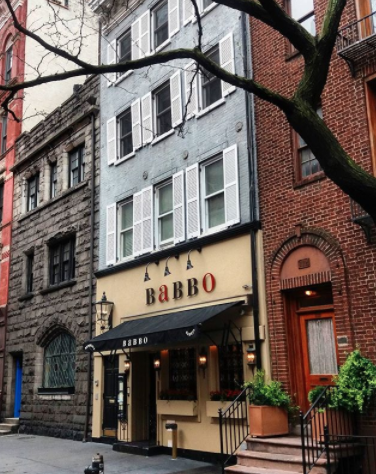
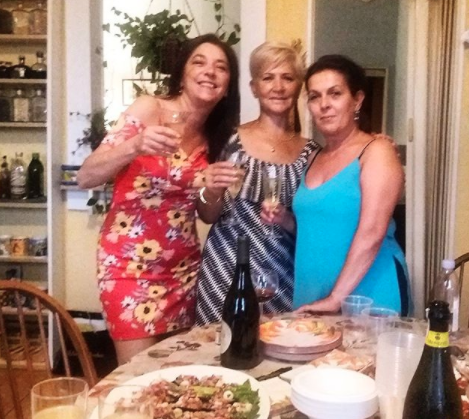
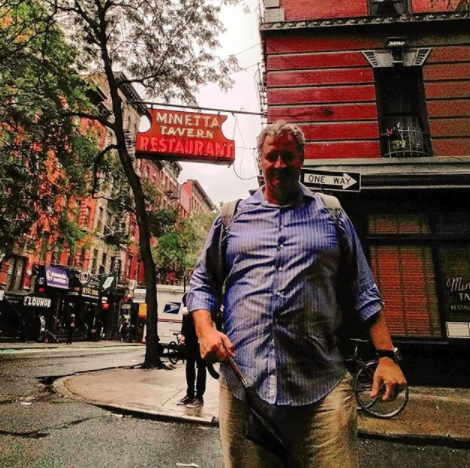
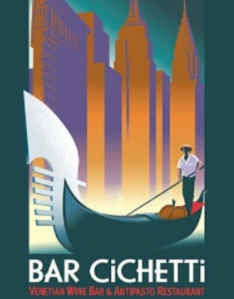
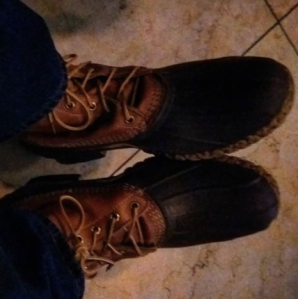
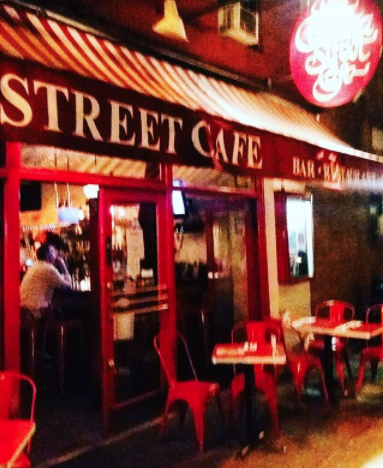
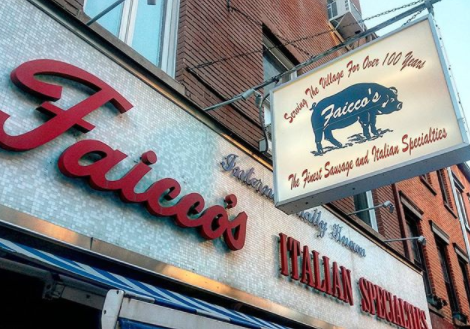

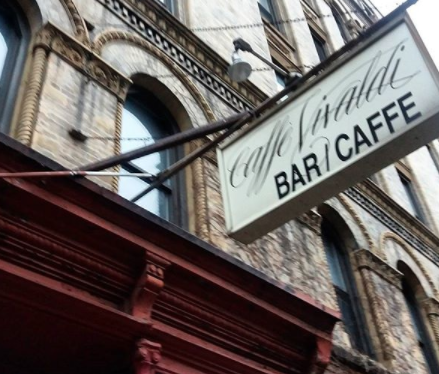

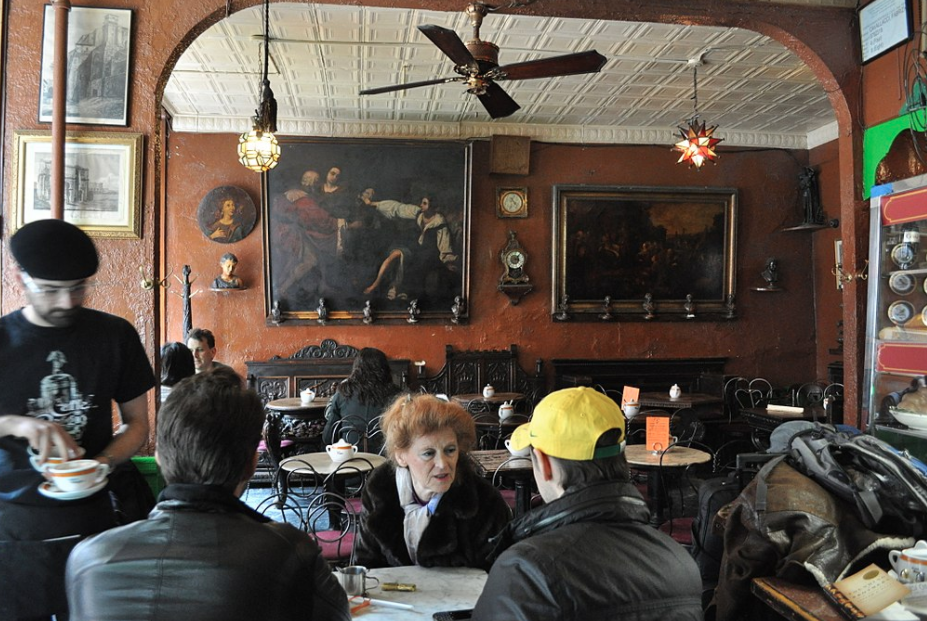

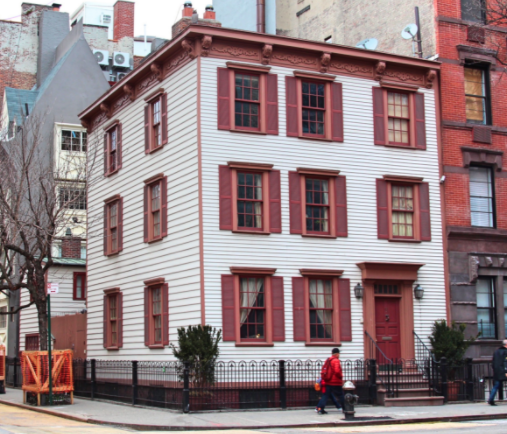

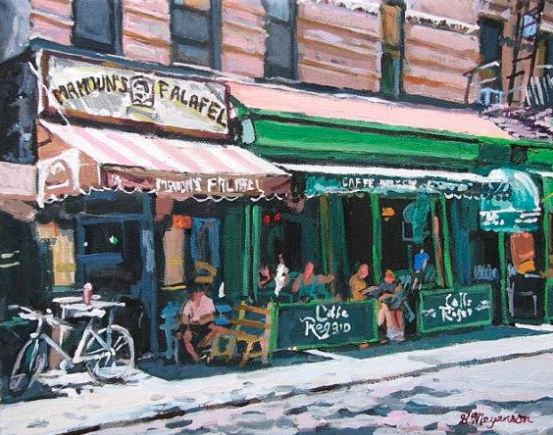
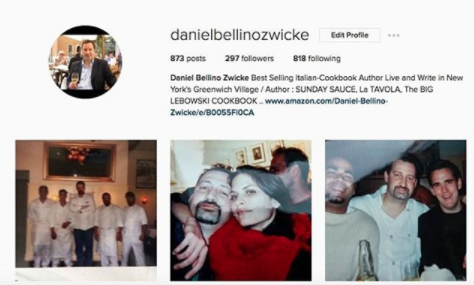
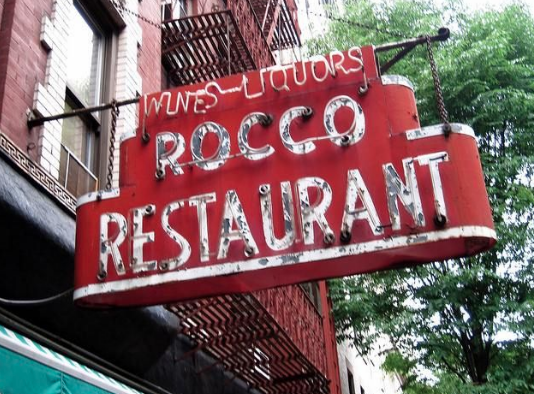
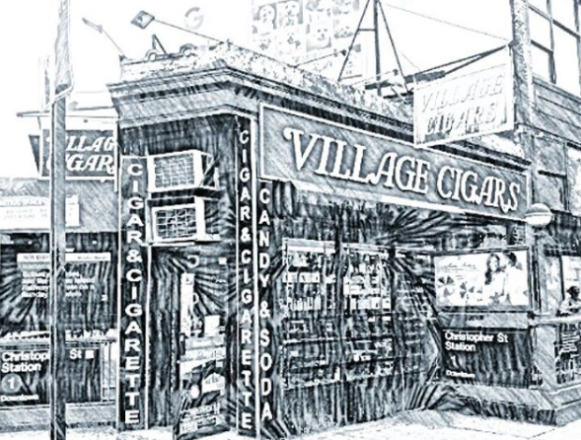

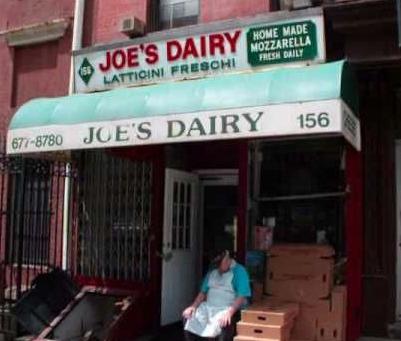


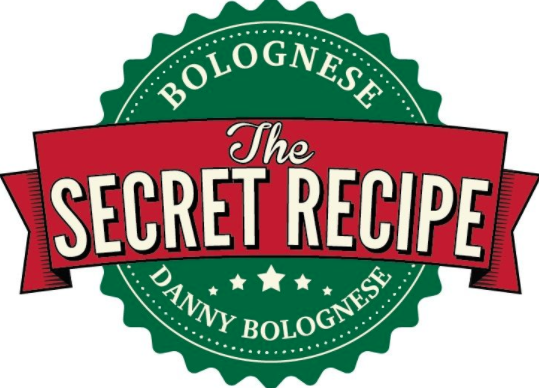
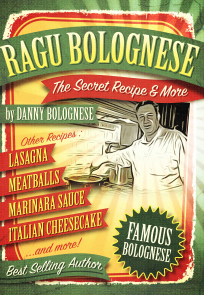






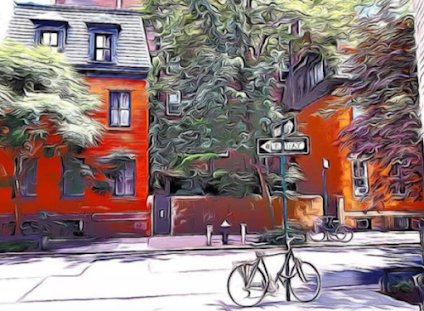




No comments:
Post a Comment